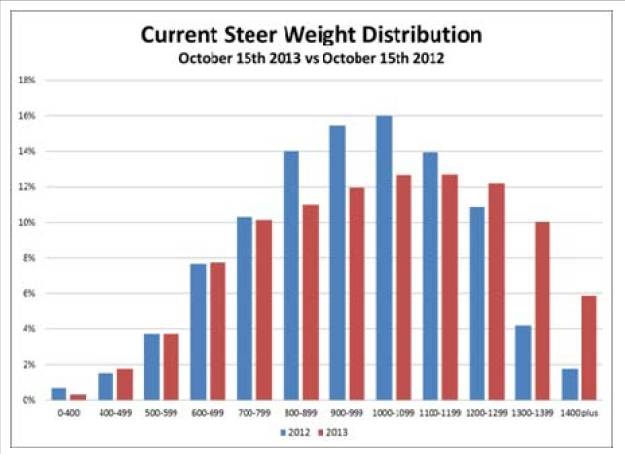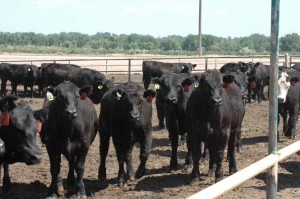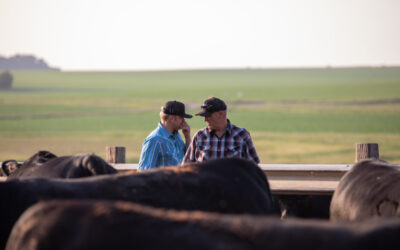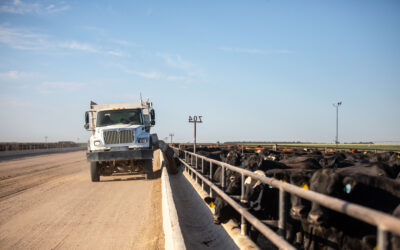
Cattle on feed, friend or foe?
The most recent Cattle on Feed report showed 8% fewer cattle than Oct. 1, 2012. There is fundamental support for fed cattle prices staying high or maybe even going higher in the future.
Now, if you are a meat buyer, those numbers certainly haven’t been “friendly” for a while. Tight supplies raise questions as to how high retail prices will need to go, and even whether product will be available to fill all orders.
Looking at the cattle on feed total doesn’t tell the whole story. It’s almost as important to look at the weight of those cattle and when they’ll be headed to market. Shawn Walter at Professional Cattle Consultants (PCC) provided this great breakdown of the weights of cattle on feed:

That graphic is pretty amazing to me. Compared to the report from last year, the industry has a lot more heavy cattle in the feedlot. In fact, 28% of the steers on feed are over 1200 lb. versus 17% at this time last year. That suggests near term we will have a decent supply of market-ready cattle, but that will change drastically when we get past Christmas.
What’s good for you might instill fear in the folks we have selling our beef every day. At CAB we work to get our licensees the most reliable predictions on CAB® supply. While fed cattle numbers will be lower, CAB® brand supplies will likely not see the same level of reduction for two reasons:
- We predict the trend toward more Angus-type cattle in the mix will continue. That means more of the fed cattle meet the first hurdle to be considered for the brand.
- Additionally, with the improvement we’ve made in genetics and management over the years, we continue to see a higher percentage of those Angus-type cattle meeting the brand’s 10 carcass specifications.
The CAB supply has been insulated to a degree because of the trend in black hides and grading improvement. Fortunately for our buyers, CAB is available at every major packer in the U.S. and Canada. That’s especially a boon in times of tighter supplies.
All supply metrics seem to point to historically high cattle price levels for the foreseeable future. The market is trying to work and send a strong signal for some herd rebuilding. If Mother Nature cooperates, I sure think that will happen.
And that’s where the opportunity lies. What kind of herd will you build back?
Mark
You may also like
System Over Scale
For Dallas Knobloch, it’s not about being the biggest feedyard—it’s about building a high-quality system that works. Today, with Tory’s wife Sadie and daughter Ivy, the Knobloch family owns and operates 4K Cattle. They feed 2,500 cattle at eight locations within 10 miles of home, manage 1,000 acres of crops and run a 125-head cow herd, all near Hills, Minn.
Data-Driven Progress and Partnerships
Discussions at Feeding Quality Forum reaffirmed the industry’s commitment to quality, transparency and innovation. With record Prime rates and strong consumer demand, producers who invest in genetics, health and relationships are positioned to drive progress and capture premiums.
Feeding Quality Forum Dates Set Earlier in August
When you’re feeding cattle, it counts to keep track of every calf, pound and dollar. Beyond the event’s educational sessions, networking between segments of the beef supply chain is invaluable—from feeders and cow-calf operators to allied industry and university researchers.




